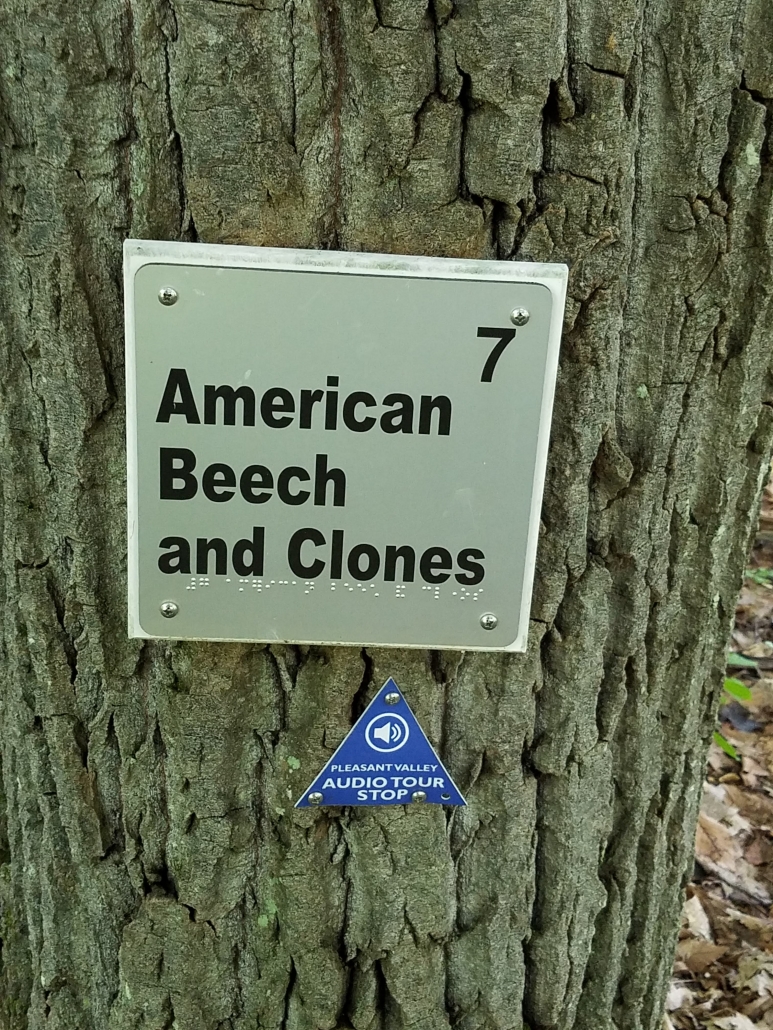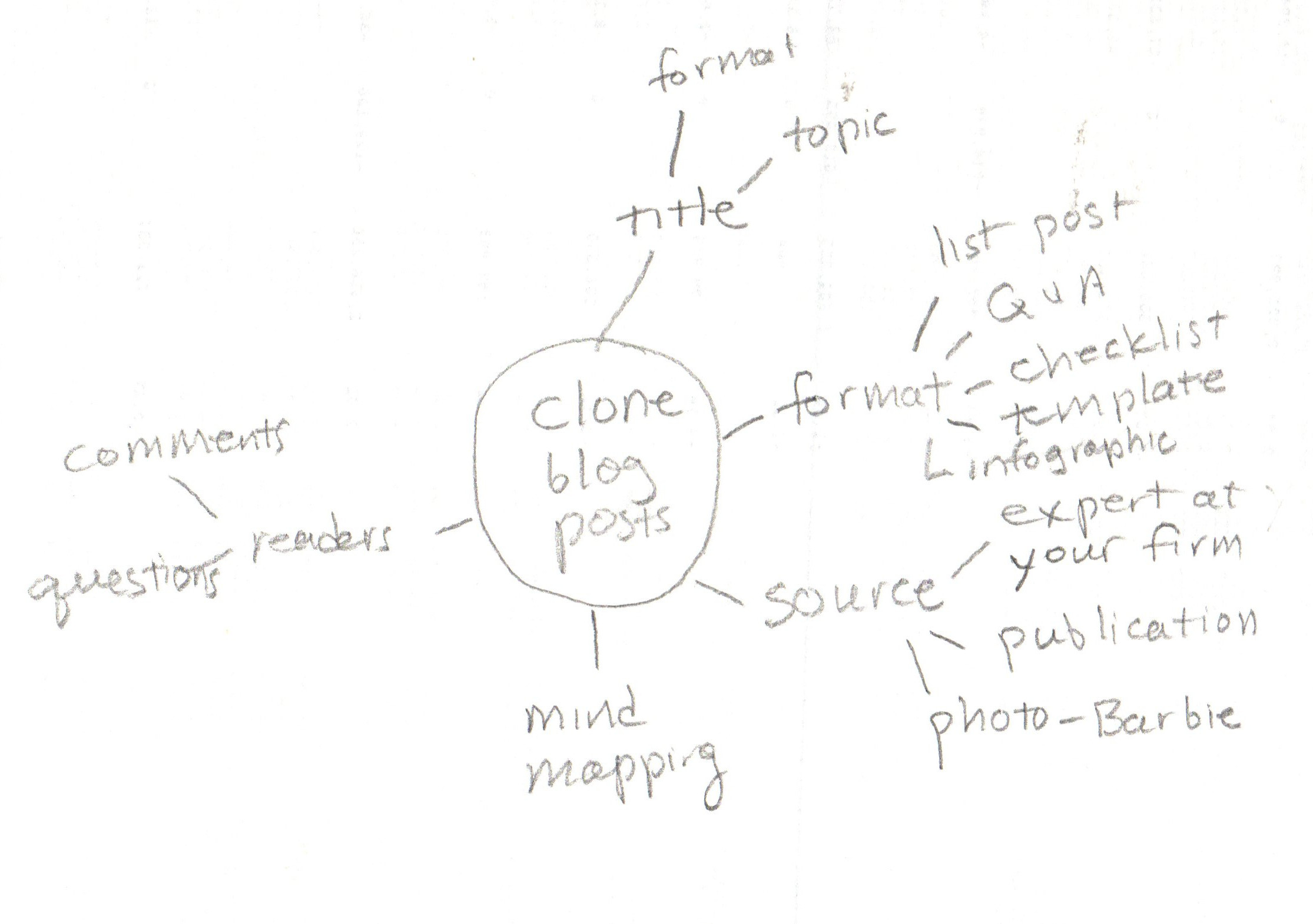Clone your blog posts
A lovely walk in a Berkshires Audubon sanctuary made me think about blogging. I saw a tree labeled “American Beech and Clones.” Because my mind works in strange ways, I immediately thought about suggesting that you try cloning your blog posts. After all, if a topic or approach works once, growing into a healthy “beech tree,” it may work again.

But, how can one clone blog posts? I turned to mind mapping to help me visualize the different ways that you might tackle this project (see image below).
That led me to the cloned blog post starting points that I list below.
1. Title
You can generate blog post ideas by cloning the structure used in the title of a successful blog post.
For example, I wrote a blog post called “Do NOT send your newsletter via your email .” The words “do NOT” could apply to many topics that evoke strong feelings from a blogger. I immediately think of “don’t sign me up for your newsletter without my permission,” a topic I’ve “already blogged about.
Do you have an action that you passionately wish your readers would not take? That’s great fodder for a blog post.
Another title-related idea is to riff off topics mentioned in the title, whether or not they’re central to the blog post. For example, there are many potential topics related to newsletters and email, the two main topics in “Do NOT send your newsletter via your email .”
2. Format
The format of your blog post can inspire you in two ways.
First, you can take the content of your current post, and pour it into a different format. For example, “Infographic: 5 Ways to Add Personality to Your Financial Writing” puts one of my blog posts into infographic form. Some people will absorb the information more easily from the infographic than from the original blog post.
Some of the formats to consider include:
- List post
- Q&A
- Checklist
- Template
- Infographic
- Podcast
- Video
The second form of inspiration can come from applying your original blog post’s format to a different topic. Have your list posts performed well? Think about other topics that would benefit from a list.
3. Sources
Perhaps it’s time to revisit the sources used in a past blog post.
Perhaps you can return to an individual at your firm or an expert outside your firm. Can that person contribute a post—or participate in an interview with you?
The publications that you quote in articles can spur ideas. For example, when I ghost-blogged about retirement for a financial advisor, I found that EBRI’s research publications provided many ideas. For my own blog, I’ve often been inspired by The Wall Street Journal, as in “Financial jargon killer: The Wall Street Journal.”
Photos are another source, as I described in “Photo + Mind Map = Blog Inspiration.” I haven’t counted, but I think I’ve published a dozen or photo-inspired posts on this blog. Not only did a photo inspire this blog post, but that photo’s reference to an audio tour made me realize I should include podcast and video in my list of formats above.
4. Mind mapping
Mind mapping is a topic generation technique that I describe in detail in my book, Financial Blogging: How to Write Powerful Posts That Attract Clients. However, you can get an idea of how it worked by looking at the mind map I wrote for this blog post.
 5. Readers
5. Readers
Your readers can also help you clone your successful blog posts. Look at their comments and questions sparked by your post and your social media shares of that post. If there’s something that resonates strongly with them—or something that puzzles them—that’s a good topic to tackle in a future post.
YOUR ideas?
If you have ideas on how to clone successful blog posts, please share them. I’m eager to learn from you.





